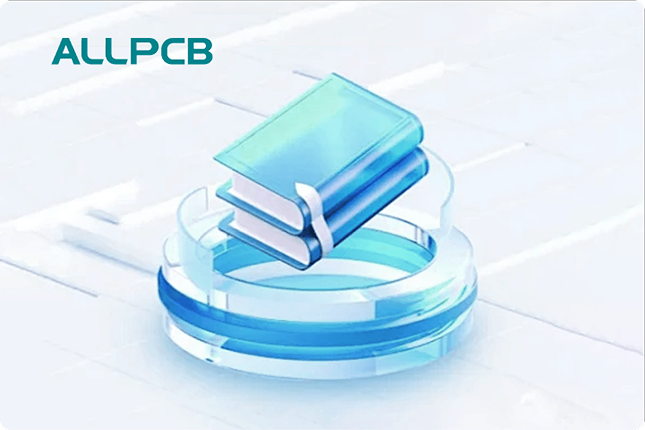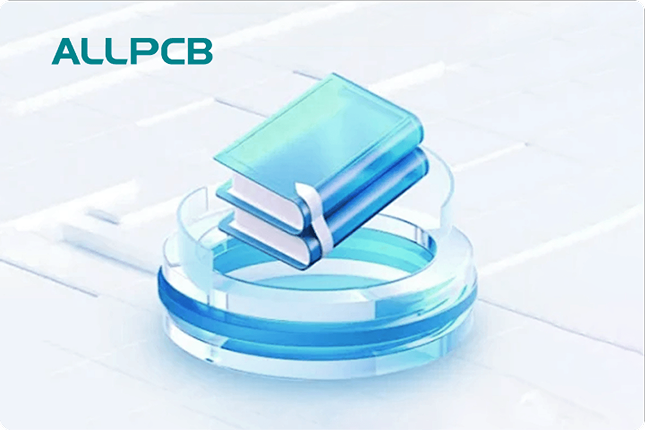When designing non-plated through-hole (NPTH) PCBs, choosing the right material is critical for ensuring performance, reliability, and cost-efficiency. NPTH PCBs, which feature holes without conductive plating, are often used for mounting components or as alignment guides. The material you select impacts thermal conductivity, dielectric constant, mechanical strength, and overall durability. Commonly used materials for NPTH PCBs include FR-4, CEM-1, and aluminum substrates. In this comprehensive guide, we'll explore these NPTH PCB materials, their properties, and how to choose the best one for your project based on specific needs like thermal management and mechanical stability.
Whether you're an engineer working on a high-heat application or a designer looking for budget-friendly options, understanding material properties is key. Let's dive into the world of NPTH PCB materials and help you make an informed decision for your next design.
What Are Non-Plated Through-Hole PCBs?
Non-plated through-hole PCBs are circuit boards with holes that are not coated with a conductive layer, unlike plated through-holes (PTH) used for electrical connections. These holes serve purposes like mounting hardware, providing alignment, or reducing board weight. Since NPTH holes don't require conductive plating, the focus when selecting materials often shifts to mechanical strength, thermal performance, and cost rather than electrical conductivity through the holes.
Choosing the right material for an NPTH PCB ensures the board can withstand the physical and environmental stresses of its application. Factors such as thermal conductivity, dielectric constant, and mechanical strength play a significant role in material selection. Let's explore the most common materials used for NPTH PCBs and their unique characteristics.
Common NPTH PCB Materials and Their Properties
The material you choose for your NPTH PCB directly affects its performance in specific environments. Below, we’ll break down the properties of three widely used materials—FR-4, CEM-1, and aluminum substrates—focusing on thermal conductivity, dielectric constant, and mechanical strength.
1. FR-4: The Standard Choice for NPTH PCBs
FR-4 is the most popular material for PCBs, including NPTH designs, due to its balance of cost, performance, and availability. It is a glass-reinforced epoxy laminate that offers excellent electrical insulation and moderate mechanical strength.
- Thermal Conductivity: FR-4 has a low thermal conductivity of about 0.3 W/m·K, which means it’s not ideal for high-heat dissipation applications without additional thermal management solutions like heat sinks.
- Dielectric Constant (Dk): With a Dk value of approximately 4.5 at 1 MHz, FR-4 provides decent electrical insulation, making it suitable for standard electronic applications. However, the dielectric constant can vary slightly with frequency and temperature.
- Mechanical Strength: FR-4 offers good tensile strength (around 310 MPa) and can handle moderate physical stress, making it durable for most NPTH applications where holes are used for mounting components.
- Applications: FR-4 is widely used in consumer electronics, industrial controls, and automotive systems where cost and reliability are priorities.
- Cost: It’s one of the most affordable options, making it a go-to material for budget-conscious projects.
FR-4 is a versatile choice for NPTH PCBs, but it may not be suitable for high-temperature or high-frequency applications due to its limited thermal conductivity and dielectric stability at higher frequencies.
2. CEM-1: A Cost-Effective Alternative
CEM-1 (Composite Epoxy Material-1) is another common material for NPTH PCBs, often used in single-sided boards. It consists of a woven glass fabric surface with a paper core, bonded with epoxy resin. While it shares some similarities with FR-4, it has distinct differences in performance.
- Thermal Conductivity: Similar to FR-4, CEM-1 has a thermal conductivity of around 0.3 W/m·K, meaning it struggles with heat dissipation in demanding applications.
- Dielectric Constant (Dk): CEM-1 has a Dk of about 4.5-5.0 at 1 MHz, slightly higher than FR-4, which can affect signal integrity in high-frequency designs but is generally acceptable for low-frequency uses.
- Mechanical Strength: With a tensile strength of approximately 240 MPa, CEM-1 is less robust than FR-4 and more prone to cracking under stress. This makes it less ideal for NPTH PCBs with frequent mechanical handling or heavy components.
- Applications: CEM-1 is often found in low-cost consumer electronics like calculators, toys, and simple LED lighting boards.
- Cost: It’s typically cheaper than FR-4, making it attractive for high-volume, low-complexity projects.
While CEM-1 is an economical choice, its lower mechanical strength limits its use in rugged environments or applications requiring long-term durability.
3. Aluminum Substrate: Superior Thermal Management
Aluminum substrates, also known as metal-core PCBs (MCPCBs), are a specialized option for NPTH PCBs where heat dissipation is a primary concern. These boards feature a layer of aluminum as the base material, providing excellent thermal performance.
- Thermal Conductivity: Aluminum substrates boast a high thermal conductivity of 1.0-2.0 W/m·K or more, depending on the alloy and construction. This makes them ideal for applications like LED lighting or power electronics where heat management is critical.
- Dielectric Constant (Dk): The dielectric layer on aluminum substrates typically has a Dk of 3.8-4.2 at 1 MHz, offering good electrical insulation for most applications.
- Mechanical Strength: Aluminum provides excellent mechanical strength with a tensile strength of around 70-270 MPa, depending on the alloy. It can withstand significant physical stress, making it suitable for NPTH holes used for heavy mounting hardware.
- Applications: Common in high-power LED lighting, automotive electronics, and power supply systems where heat dissipation is crucial.
- Cost: Aluminum substrates are more expensive than FR-4 and CEM-1 due to their specialized construction and superior performance.
Aluminum substrates shine in applications requiring high thermal conductivity, but their higher cost may not be justified for simpler NPTH PCB designs without significant heat concerns.
Key Material Properties to Consider for NPTH PCBs
When selecting a material for your NPTH PCB, it’s essential to evaluate the specific requirements of your project. Here are the critical material properties to consider and how they impact performance.
Thermal Conductivity
Thermal conductivity measures a material's ability to transfer heat. For NPTH PCBs used in high-power or high-temperature environments, choosing a material with high thermal conductivity, like an aluminum substrate, prevents overheating and extends component lifespan. For example, in an LED lighting application, an aluminum substrate can reduce operating temperatures by efficiently dissipating heat, potentially lowering junction temperatures by 10-20°C compared to FR-4.
In contrast, FR-4 and CEM-1 are better suited for low-power applications where heat dissipation isn’t a significant concern. If thermal management is needed with these materials, additional solutions like heat sinks or thermal vias may be required.
Dielectric Constant
The dielectric constant (Dk) affects how a material interacts with electric fields, influencing signal speed and impedance in a PCB. For NPTH PCBs, where holes are not used for electrical connections, the dielectric constant is less critical than in high-frequency PTH designs. However, it still matters for overall board performance, especially if signal integrity is a concern elsewhere on the board.
FR-4 and CEM-1 have similar Dk values (around 4.5-5.0), suitable for standard applications. Aluminum substrates often have a slightly lower Dk due to their dielectric layer, which can be beneficial in specific designs but is generally not a deciding factor for NPTH applications.
Mechanical Strength
Mechanical strength determines how well a material withstands physical stress, such as during assembly or in harsh environments. For NPTH PCBs, where holes are often used for mounting hardware or alignment, mechanical strength is crucial to prevent cracking or deformation.
FR-4 offers the best balance of strength and cost, with a tensile strength of about 310 MPa, making it suitable for most applications. CEM-1, with a lower tensile strength of 240 MPa, is more prone to damage and better suited for lightweight, low-stress designs. Aluminum substrates provide robust mechanical strength, ideal for heavy-duty applications, though their rigidity can sometimes complicate manufacturing processes like drilling NPTH holes.
How to Choose the Right Material for Your NPTH PCB
Selecting the right material for your NPTH PCB involves balancing performance requirements with budget constraints. Here are some practical steps to guide your decision:
- Identify Application Needs: Determine the primary function of your PCB. Does it require high heat dissipation (e.g., power electronics)? Is mechanical durability critical due to heavy mounting hardware? Or is cost the main concern for a simple consumer product?
- Evaluate Environmental Conditions: Consider the operating environment. Will the PCB be exposed to high temperatures, humidity, or physical stress? For high-heat environments, aluminum substrates are ideal, while FR-4 works well in standard conditions.
- Assess Electrical Requirements: Although NPTH holes aren’t conductive, the overall board may have electrical performance needs. Check if the dielectric constant or other properties will impact signal integrity elsewhere on the board.
- Consider Manufacturing Constraints: Some materials, like aluminum substrates, may require specialized drilling techniques for NPTH holes, increasing production costs. Ensure your manufacturing process aligns with the chosen material.
- Balance Cost and Performance: If budget is a concern, start with cost-effective options like CEM-1 or FR-4. Reserve aluminum substrates for applications where thermal performance justifies the higher cost.
For instance, if you’re designing an NPTH PCB for a high-power LED driver, an aluminum substrate is the best choice due to its thermal conductivity of up to 2.0 W/m·K. On the other hand, for a simple control board in a household appliance, FR-4 with its tensile strength of 310 MPa and low cost will likely suffice.
Advantages and Limitations of NPTH PCB Materials
Each material has its strengths and weaknesses. Understanding these can help you make a more informed choice for your NPTH PCB design.
- FR-4
- Advantages: Affordable, widely available, good mechanical strength, and suitable for standard applications.
- Limitations: Poor thermal conductivity (0.3 W/m·K) and limited performance in high-frequency or high-temperature environments.
- CEM-1
- Advantages: Very low cost, lightweight, and adequate for simple, single-sided boards.
- Limitations: Lower mechanical strength (240 MPa) and not suitable for complex or high-stress designs.
- Aluminum Substrate
- Advantages: High thermal conductivity (1.0-2.0 W/m·K), excellent for heat dissipation, and strong mechanical properties.
- Limitations: Higher cost and potential challenges in manufacturing processes like drilling NPTH holes.
Conclusion: Making the Best Choice for NPTH PCB Materials
Selecting the right material for non-plated through-hole PCBs is a critical step in ensuring the success of your electronic design. FR-4 offers a reliable and cost-effective solution for most standard applications, with a dielectric constant of around 4.5 and tensile strength of 310 MPa. CEM-1 provides an even cheaper alternative for low-complexity projects, though its mechanical strength is lower at 240 MPa. For applications requiring superior heat dissipation, aluminum substrates stand out with thermal conductivity up to 2.0 W/m·K, making them ideal for high-power designs.
By carefully considering factors like thermal conductivity, dielectric constant, mechanical strength, and cost, you can choose the NPTH PCB material that best meets your project’s needs. Whether you prioritize durability, thermal management, or budget, understanding these material properties empowers you to create high-performing, reliable PCBs tailored to your specific application.
 ALLPCB
ALLPCB







